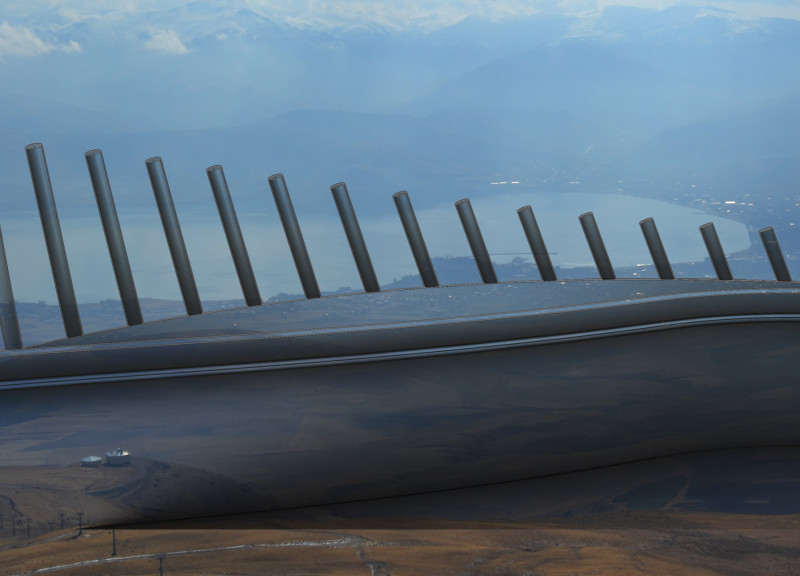5 key facts about this project
At its core, this architectural design provides a multifunctional space intended for [specify the primary function, such as communal activities, educational purposes, or commercial use]. The layout reflects a clear understanding of user behavior, promoting ease of movement and interaction among visitors. Key design features, including open floor plans and strategically placed communal areas, cater to a variety of activities while enhancing connectivity. These spaces allow for both individual contemplation and group engagement, underscoring the project's commitment to versatile functionality.
The architectural language of the building is characterized by a mix of modern and traditional elements that resonate with the local culture. The exterior façade, crafted from a combination of locally sourced materials, showcases an inviting aesthetic. The choice of reinforced concrete offers durability, while extensive use of glass not only maximizes natural light but also creates a strong visual link between indoor and outdoor environments. This design choice not only enhances the user experience but also reflects a broader environmental initiative by encouraging energy efficiency through natural lighting.
Unique design approaches highlight the project's innovative spirit. A prominent feature is the incorporation of green roofing, which serves multiple purposes, including insulation, rainwater management, and biodiversity promotion. This feature not only reduces the building's ecological footprint but also provides an opportunity for community gardens, reinforcing the notion of sustainability. Additionally, carefully designed overhangs and shading devices control solar gain, further advancing the project’s energy efficiency.
Another distinctive aspect of this architectural endeavor is the integration of natural ventilation systems. By positioning openings strategically, the design promotes airflow without relying solely on mechanical means, which further contributes to energy savings. The thoughtful arrangement of spaces encourages cross-ventilation, ensuring that the interior environment remains comfortable year-round.
Within the building, attention to interior design complements its overall architecture. The use of warm wooden finishes and calming color palettes creates an inviting atmosphere that encourages collaboration and creativity. Modular furnishings allow flexibility in how spaces are utilized, adapting to various events and gatherings. These elements collectively enhance the functional performance of the building while maintaining a focus on user comfort.
Accessibility is another crucial consideration in this architectural project. Careful attention has been paid to ensure that the design complies with universal design principles. Ramps, wide doorways, and elevators facilitate ease of access for all individuals, demonstrating a commitment to inclusivity.
In exploring this architectural project further, readers are encouraged to delve into the provided architectural plans, sections, and details that illustrate the profound thought and technical skill behind the design. By examining these elements, one can gain a deeper understanding of how contemporary architectural ideas have been skillfully applied to address both the functional demands and the aesthetic aspirations of the building. This project stands as a testament to the capabilities of modern architecture in creating spaces that are not only beautiful but also serve meaningful purposes within their communities.
To fully appreciate the scope and intricacies of this architectural design, visit the project presentation for an in-depth look at its plans, sections, and innovative ideas that all contribute to its overall success.


























